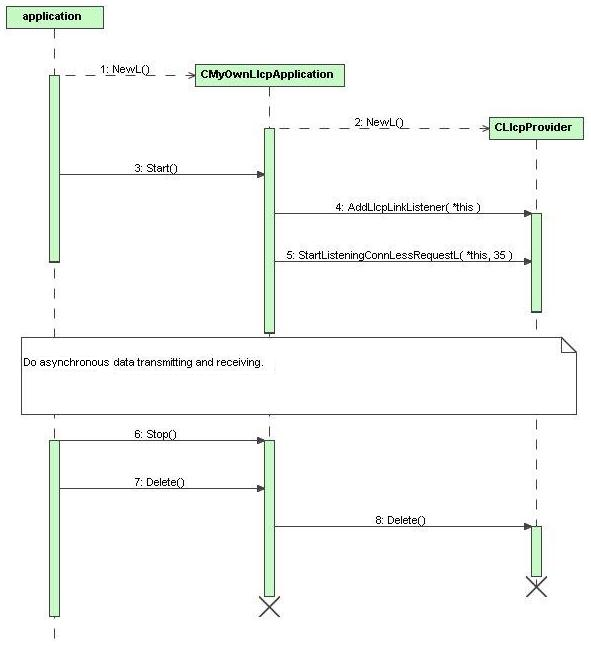Preparing to Use the LLCP Stack
Steps
Create an instance of
the CLlcpProviderclass, which provides services to listen to LLCP-related events and creates connection objects between the local and remote devices.Add an LLCP-link listener and a connectionless-request listener to listen to the LLCP-link status, as shown in the following code snippet:
Example:
// CMyOwnLlcpApplication::Start() // ----------------------------------------------------------------------------- // void CMyOwnLlcpApplication::Start() { if ( !iStarted ) { // Adding an LLCP link listener iLlcp->AddLlcpLinkListenerL( *this ); // Adding a listener to SSAP 35. If any Connectionless transport // messages are sent to SSAP 35, this listener will handle them. iLlcp->StartListeningConnLessRequestL( *this, KInterestingSsap ); iStarted = ETrue; } } // ----------------------------------------------------------------------------- // End of CMyOwnLlcpApplication::Start()The
CMyOwnLlcpApplicationobject waits for notifications after the LLCP link between the local and the remote devices is established.CMyOwnLlcpApplicationis also notified when connectionless requests with SSAP 35 (Source Service Access Point) are received.Remove all listeners from the
CLlcpProviderinstance.Example:
// CMyOwnLlcpApplication::Stop() // ----------------------------------------------------------------------------- // void CMyOwnLlcpApplication::Stop() { if ( iStarted ) { // Stopping listening to LLCP link iLlcp->RemoveLlcpLinkListener(); // Stopping listening to SSAP 35. iLlcp->StopListeningConnLessRequest( KInterestingSsap ); iStarted = EFalse; Cleanup(); } } // ----------------------------------------------------------------------------- // End of CMyOwnLlcpApplication::Stop()The following diagram illustrates how to prepare and use the LLCP stack:

Figure: Sequence diagram for preparing to use the LLCP stack